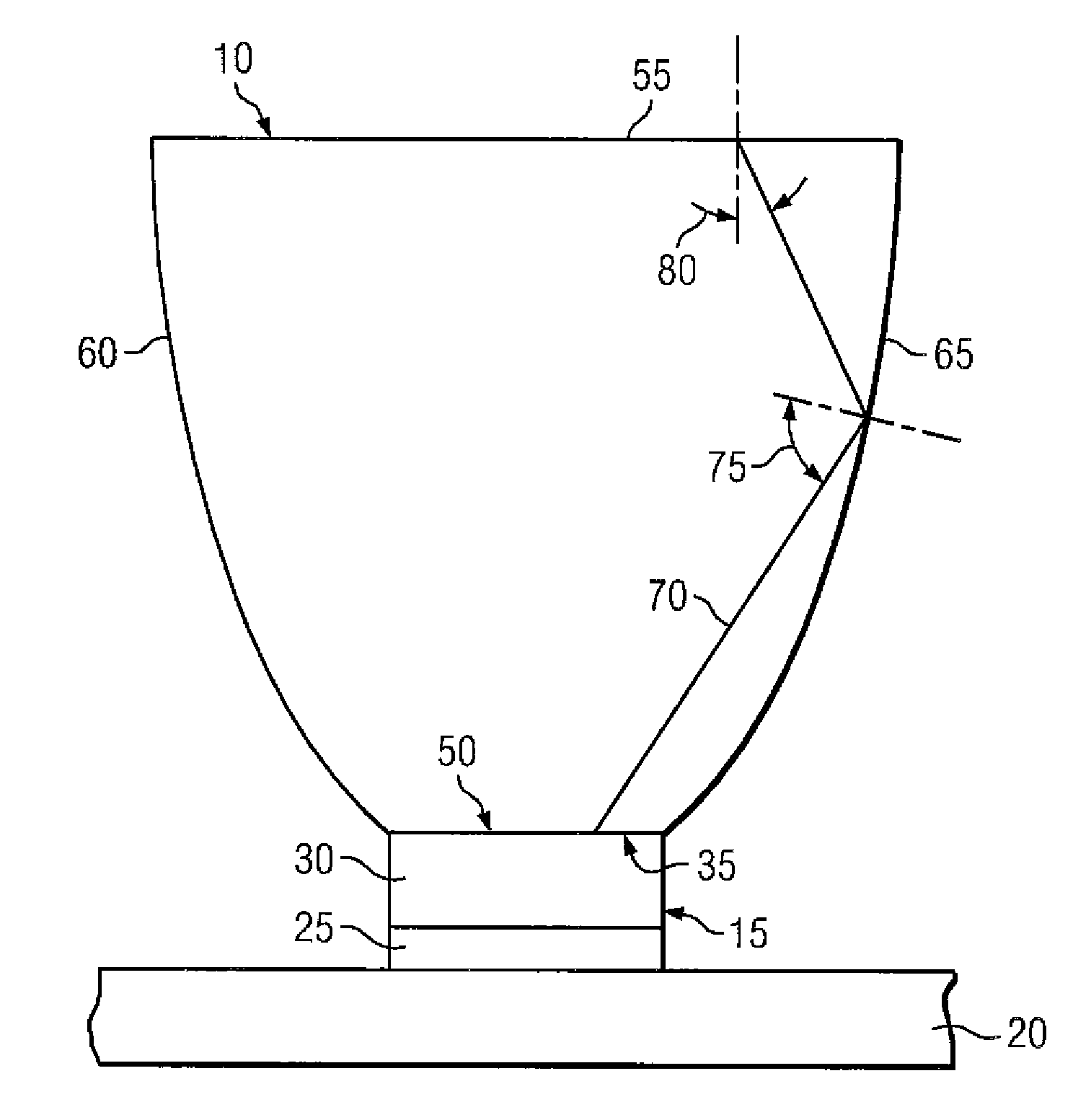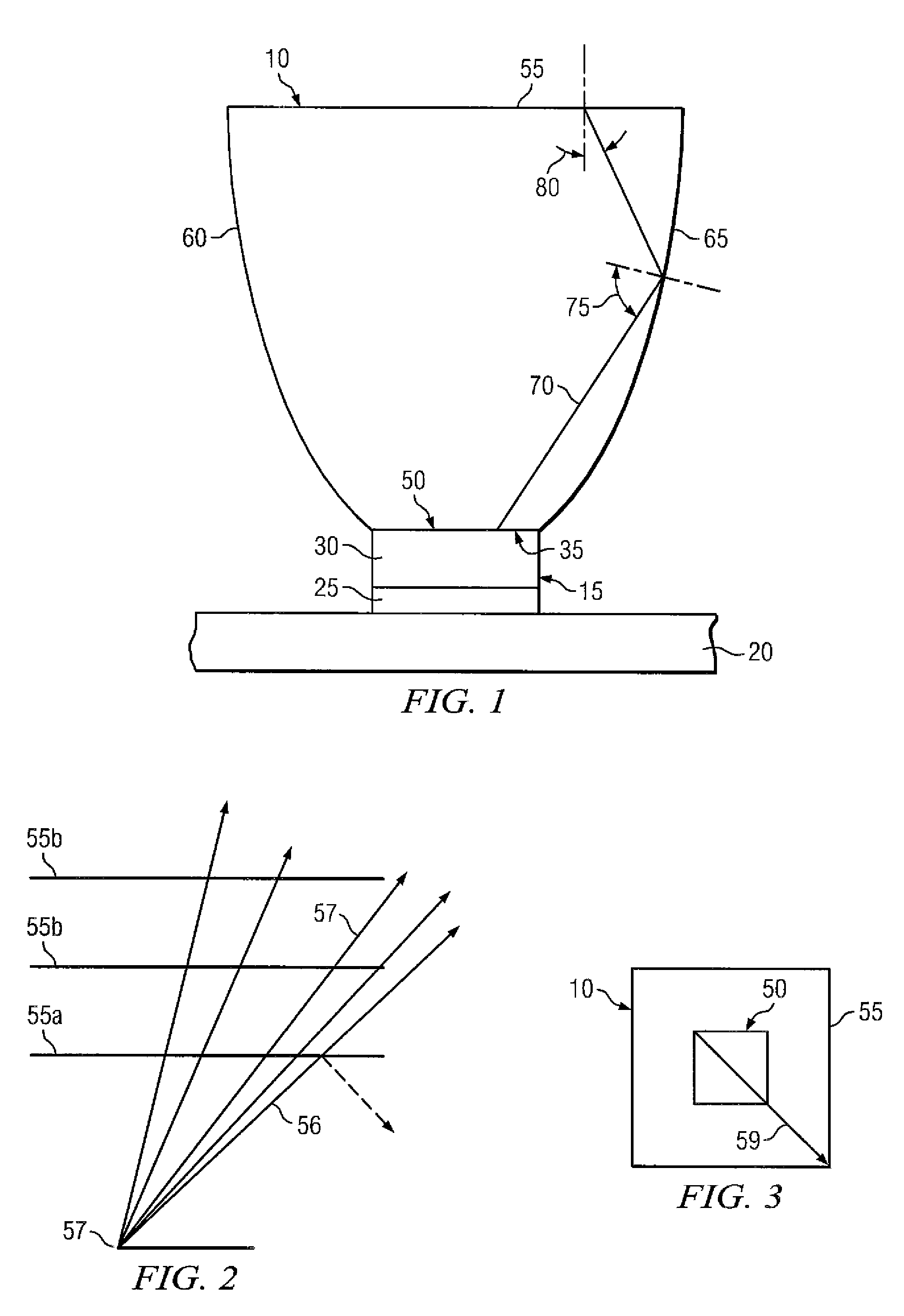Separate optical device for directing light from an LED
a technology of led light and optical device, which is applied in the direction of optical elements, lighting and heating apparatus, instruments, etc., can solve the problems of significant non-uniformities between near-field and far-field distribution, inability to collect an f/1 acceptance angle of the led die, and inability to separate optical devices. to achieve the effect of reducing or eliminating the need for secondary optics
- Summary
- Abstract
- Description
- Claims
- Application Information
AI Technical Summary
Benefits of technology
Problems solved by technology
Method used
Image
Examples
Embodiment Construction
[0035]Preferred embodiments of the invention are illustrated in the FIGURES, like numerals being used to refer to like and corresponding parts of the various drawings.
[0036]Embodiments of the present invention provide a separate optical device that is coupled to an LED to direct light from the LED to an exit interface of the separate optical device. Ideally, the separate optical device is configured so that all the light entering the separate optical device from the LED is transmitted out the exit interface. To this end, the exit interface can be sized to take into account principles of conservation of radiance. The exit interface may be the minimum size that allows all light entering the separate optical device from the LED to exit the exit interface, thereby combining the desire to conserve radiance with the desire to reduce size. Additionally, the sidewalls of the device may be shaped so that reflection or total internal reflection (“TIR”) causes light beams incident on the sidew...
PUM
 Login to View More
Login to View More Abstract
Description
Claims
Application Information
 Login to View More
Login to View More - R&D
- Intellectual Property
- Life Sciences
- Materials
- Tech Scout
- Unparalleled Data Quality
- Higher Quality Content
- 60% Fewer Hallucinations
Browse by: Latest US Patents, China's latest patents, Technical Efficacy Thesaurus, Application Domain, Technology Topic, Popular Technical Reports.
© 2025 PatSnap. All rights reserved.Legal|Privacy policy|Modern Slavery Act Transparency Statement|Sitemap|About US| Contact US: help@patsnap.com



